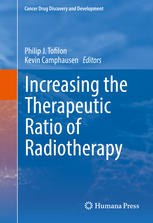

Most ebook files are in PDF format, so you can easily read them using various software such as Foxit Reader or directly on the Google Chrome browser.
Some ebook files are released by publishers in other formats such as .awz, .mobi, .epub, .fb2, etc. You may need to install specific software to read these formats on mobile/PC, such as Calibre.
Please read the tutorial at this link: https://ebookbell.com/faq
We offer FREE conversion to the popular formats you request; however, this may take some time. Therefore, right after payment, please email us, and we will try to provide the service as quickly as possible.
For some exceptional file formats or broken links (if any), please refrain from opening any disputes. Instead, email us first, and we will try to assist within a maximum of 6 hours.
EbookBell Team

4.0
16 reviewsCurrent cancer therapies are focused on three general strategies: modifying intrinsic radiosensitivity via molecular targeting, manipulating microenvironmental factors to enhance tumor susceptibility to radiation, and improving delivery of radiation to critical tumor locations while sparing normal tissues. The goal of this volume is to describe a number of promising approaches corresponding to each strategy.
In general, research in radiation oncology tends to be siloed into fundamental biology, physics or treatment delivery. The strategies for improving therapeutic ratio encompassed in this book will involve each of these components of radiation oncology. Thus, they will illustrate the variety of disparate approaches available for potentially improving the efficacy of radiotherapy, which may then stimulate discussion across disciplines and foster further translational investigations.
Although a goal of each chapter will be to highlight advances within an approach, of equal importance will be the delineation of barriers to successful clinical application and how to overcome or minimize such impediments. Along these lines, because therapeutic ratio incorporates both tumor and normal tissue radio response, a point of emphasis will be the mechanistic rationale for selectively modifying tumor (sensitization) or normal cells (protection).
Finally, whereas the literature is replete with studies describing potential targets/strategies for increasing the therapeutic ratio for radiotherapy, this book will focus on those supported by in vivo data consistent with impending translational application along with those that are already being evaluated in the clinic.